Harland & Wolff, the historic Belfast shipyard, is set to become one of the UK’s most advanced naval construction sites following a major investment from Navantia UK.
The company—now the owner of the shipyard—has launched a wide-reaching modernisation programme to support the building of Fleet Solid Support (FSS) vessels for the Royal Navy.
The transformation represents a significant expansion of the funding initially allocated under the Ministry of Defence’s FSS contract, and will see substantial upgrades in infrastructure and technological capability across the site.
“This investment marks a watershed moment for UK shipbuilding,” said Juan de la Cueva, CEO of Navantia UK. “By combining Harland & Wolff’s proud heritage with Navantia’s global expertise and cutting-edge technology, we are creating a world-class facility capable of delivering the next generation of naval vessels.”
Civil works at the site resumed in March after a temporary pause, with phase one focused on improving hull-building capacity. Enhancements include new lifting cranes, robotic plasma cutters, automated quality control systems, and a fully mechanised flat panel production line. Crucially, the iconic Samson and Goliath gantry cranes will continue to serve the upgraded yard.
The investment will benefit 600 existing jobs in Belfast and has the potential to create additional high-skilled roles in computer-aided design, digital systems integration, and advanced manufacturing. According to Navantia, the programme will support not only the FSS project but also position the yard to lead future domestic and international naval contracts.
“This modernisation programme represents our long-term commitment to UK sovereign capability, and to the revival of shipbuilding across the UK,” de la Cueva added.
Alongside its Belfast transformation, Navantia UK is upgrading its Appledore yard in Devon—responsible for building bow sections of the FSS vessels—with the purchase of a next-generation plasma cutter.
The company is also investing in infrastructure and training facilities at its Scottish sites in Arnish and Methil.




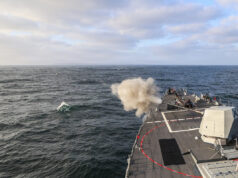
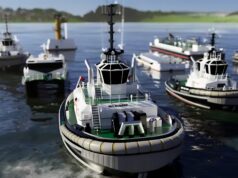
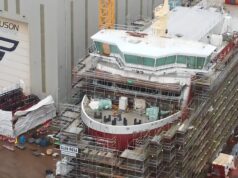
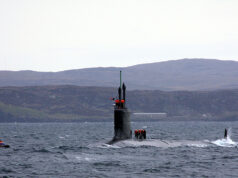
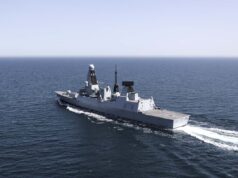


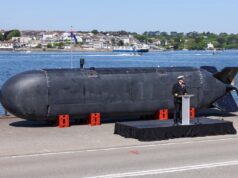
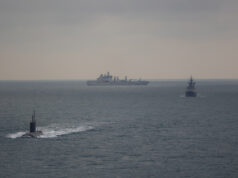

Good news all round, apart from the fact that Navantia isnt a British company.
We can always nationalise in time of crisis; they can hardly move the shipyards back to Spain.
Agree the government can step in anytime they choose to take over any industrial site they so wish.
Tories should have saved Port Talbot from closure. They didn’t because it’s not in England and not ever likely to vote Tory. Scandalous really.
Guess where MRSS is going then ? Together with FSSS thats Belfast potentially taken care of up to 2050.
Very important we get up to three surface yards now with a steady flow of ships with Belfast focused on large RFA and Amphibious vessels , Glasgow on Destroyers and Rosyth on Frigates.
The new budgets will sustain a navy large enough for three surface ship yards each producing 1 ship every 2 years with around 30 surface combatants 6 amphibious ships 7 large Auxiliaries and four sea lift ships.
As we have seen with T31 and T26 if we can maintain continuous build we can attract export orders for warships no using smaller or foreign yards to ramp up production of blocks when needed we should be able to accommodate export orders as well without having to rely on them to keep yards open.
Good news, lets hope they do not build any unsinkable ships there just be on the safe side.
Wonderful news!
👍🚢🇬🇧,🙃🕳️btth.
Badly needed. The shipyard is currently just an abandoned industrial wasteland. I’m not even sure that Samson and Goliath are still certified and functional, they don’t seem to have moved for years. It’s going to take a lot time and money to get the yard up to scratch to assemble the FSS’s, I’m sceptical whether it is worth it.
No they are not, the H&W ship repair business was booming prior to the problems caused by John Woods mismanagement. The fabrication end of things is / was gearing up for the FSS order, for example the Cory barge contract. An industrial wasteland doesn’t employ 600 people. The cranes are certified, are used and will be a valuable asset going forward.
Good news.
I for one am happy with the Navantia acquisition of H&W.
A parent company with modern shipbuilding skills is needed to bring the yard up to scratch so it at least has a chance of having a sustainable future.
For all of those who say we shouldn’t have let a foreign company buy the yard, it isn’t as if the new owners can physically take away the yard. In a crisis it can be nationalised, but the remaining crown jewels of UK shipbuilding BAE Clyde, BAE Barrow and Babcock’s Rosyth are still British owned and run.
But how much extra are FSS going to cost, it’s not Navantia funding this it’s the UK government and they could have funded H&W directly before the Navantia take over..
Any owner can buy new equipment and infrastructure.
Navantia will bring the expertise and management to improve their shipbuilding processes and skills. That is something a UK Govt bailout wouldn’t have achieved.
They were supposed to do technology transfer to H&W as put of the original deal so should have been doing what you described without more money.
Also H&W weren’t looking for a bail out they wanted a loan guarantee so they could get a cheap loan. A loan guarantee is far different to HMG handing a foreign state owned ship builder 300m.
Exactly. Navantia, if I remember correctly, got an extra £200 million added on to the cost of building the ships, This was after UK gov refused to underwrite a loan for H&W to modernise the yard to build the ships that they ordered! What’s the total cost so far I wonder and nothing is closed to being built.
Yea Sure, but now they have an in to our defence contracts. Spain is clever at this but I realise in the present situation of our weak politicians allowing our ship building to skills self destruct what option? A lack of industrial planning 10 years ago was woeful. An added benefit is maybe an improved relationship.
we are building and preparing for war/deterrent…the yard should never have fallen into such a sorry state.
They were supposed to do technology transfer to H&W as put of the original deal so should have been doing what you described without more money.
Also H&W weren’t looking for a bail out they wanted a loan guarantee so they could get a cheap loan. A loan guarantee is far different to HMG handing a foreign state owned ship builder 300m.